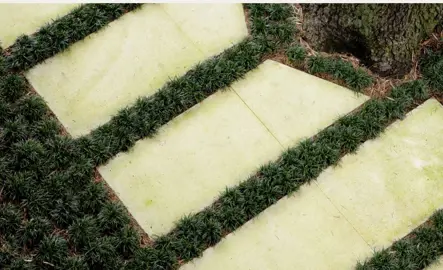NZ Tree Ferns
The most common NZ native tree ferns are:

Tree ferns are iconic native plants of New Zealand, valued for their majestic trunks and lush, arching fronds. This guide provides essential information on planting, caring for, and maintaining tree ferns to help them thrive in your garden or landscape.
Growing tree ferns in New Zealand adds a lush, tropical feel to gardens and landscapes. These majestic ferns thrive in NZ’s mild, humid climate with well-drained soil and shade. With proper care, tree ferns provide year-round greenery and a striking focal point for native and exotic garden designs.
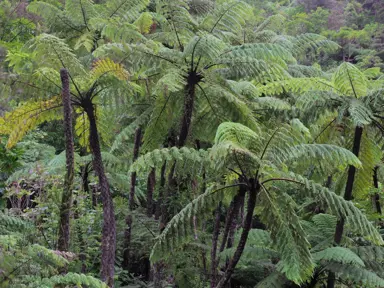
The most common NZ native tree ferns are:
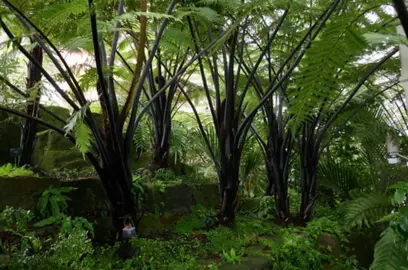
The Black Tree Fern, scientifically known as Cyathea medullaris, is a majestic native New Zealand tree fern. It can reach heights of up to 20 metres, with a crown of large, arching fronds. The trunk is characterized by its dark, almost black colour, hence the common name. The fronds are typically 3-5 meters long, with a distinctive black leaf stalk.
Black Tree Ferns thrives in damp, shaded environments like gullies and forests. They are found throughout New Zealand, from sea level to higher altitudes. They can tolerate some frost but prefer frost-free and sheltered locations. The soil should be consistently moist but without being overwatered.
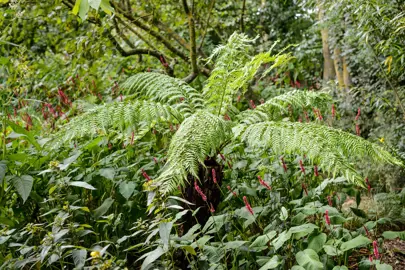
Tree Ferns generally prefer shade or partial shade rather than full-sun positions. Direct sunlight, especially intense midday sun, can scorch the fronds. This is particularly so if plants have come from shade without any acclimation to bright light. The sun essentially destroys the pigments in the leaves and can cause death of the frond (or plant). Partial shade is often the best option. This involves providing dappled sunlight such as under the canopy of larger trees or the like.
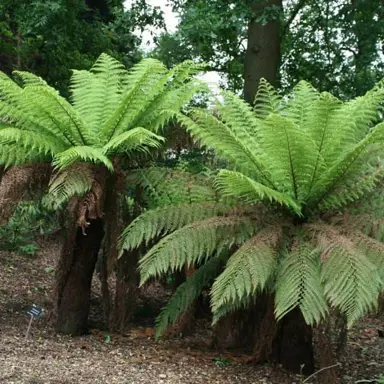
Choose a partial shade position with good drainage and moderate shelter for your Tree Fern. The hole should be dug to at least 50-75% deeper and wider than the container the plant is currently growing in. A good planting spade makes this job a lot easier. The Plant Company recommends incorporating compost or sheep pellets into the soil to provide additional organic material, but this is not essential. Do not put fertiliser in the bottom of the hole, rather spread that on the soil surface after planting, and preferably do this when the plant is actively growing in spring.
Remove the plant from the container it is growing in by either pulling it free or by cutting the bag. We recommend cutting the bag, especially for larger grade plants, to minimise any chance of damaging the roots. The Plant Company does not advise cutting through roots, even if the plant is rootbound, as that injures the plant. Our article, Managing Rootbound Plants explains this in more detail.
Now place the plant in the hole and make sure it is level with the soil surface before filling in around it. If it is sitting above the soil surface, dig more out. If it is below, put in more soil and retest the level. Once the plant is set level with the soil surface, add more soil gradually and firm it around the plant using gentle pressure from your fingers as you go. Scatter native plant fertiliser across the soil surface after planting and the give the plant a good watering. If the plant is taller than 30 cm you might want to consider staking it to give it a bit of extra support and use tree ties for secure and appropriate holding. Make sure the soil around the tree does not dry out but be careful to avoid overwatering it and drowning it!
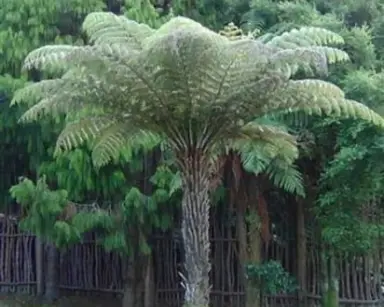
The Silver Fern tree, scientifically known as Cyathea dealbata, is a distinctive tree fern endemic to New Zealand. It is recognisable by the silvery-white underside of its mature fronds, which is a characteristic that inspired its common name. It can eventually grow to 6 m tall and 4 m wide, but can take 50 or more years to achieve.
The Silver Fern tree is widely used in shaded gardens such as the entry to a building or on the shaded side of a house. It enables height, texture, and elegance to be brought into a space. With its slow-growth rate, it will not become too large and is therefore a popular option. Be sure to not let the tree dry out and avoid exposed areas.
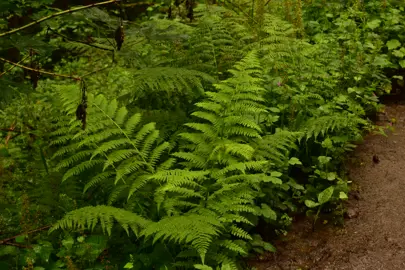
The main difference between a fern and a tree fern lies in their growth habit. A fern typically grows low to the ground and has fronds that emerge directly from the ground or a short, creeping rhizome (underground stem). A tree fern develops a tall, tree-like trunk and the fronds emerge from a crown at the top of this trunk. NB: tree ferns have a unique trunk structure composed of a mass of roots and other tissues. Those tissues are not true wood like typical trees.
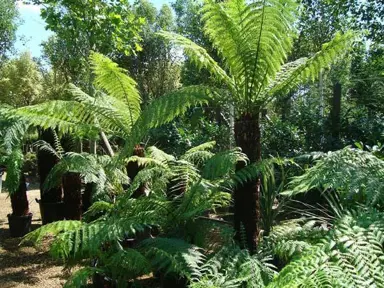
Tree ferns can have incredibly long lifespans with some species known to live for over 250 years in the wild. This impressive lifespan may be partially due to their slow growth rate relative to other species and ability to cope with a wide array of climatic conditions. Environmental conditions will almost certainly dictate the lifespan of a tree fern. The ideal growing conditions include adequate and consistent moisture, shade, and protection from harsh weather.
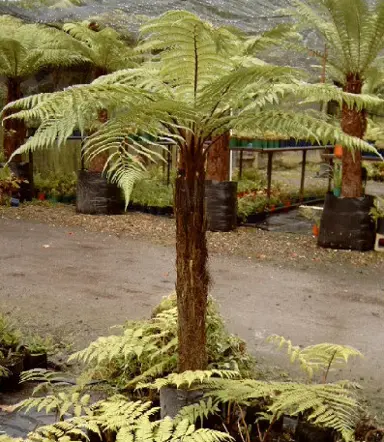
The most beautiful tree fern is a matter of opinion, but some of the most popular and highly regarded species include:
Ultimately, the most beautiful tree fern is the one that you find most appealing. Consider your personal preferences and the growing conditions in your area when choosing a tree fern for your landscape.
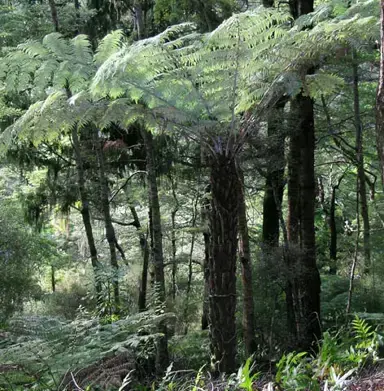
The Silver Fern (Cyathea dealbata) is arguably the most popular tree fern, especially in New Zealand. Its popularly stems from being a national symbol, great aesthetics, and cultural significance.
Other tree ferns like the Black Tree Fern (Cyathea medullaris) are also significant, the Silver Fern is certainly the most popular.
Whether you need assistance finding the plant you’re looking for or you simply want to know more about who we are and what we do, we invite you to get in touch with us today. A member of The Plant Company team will get back in touch as soon as possible.


